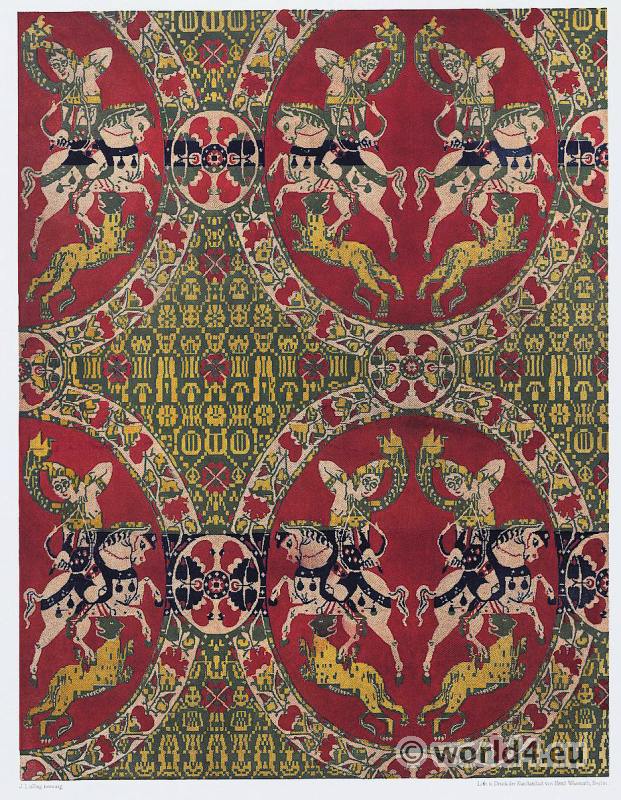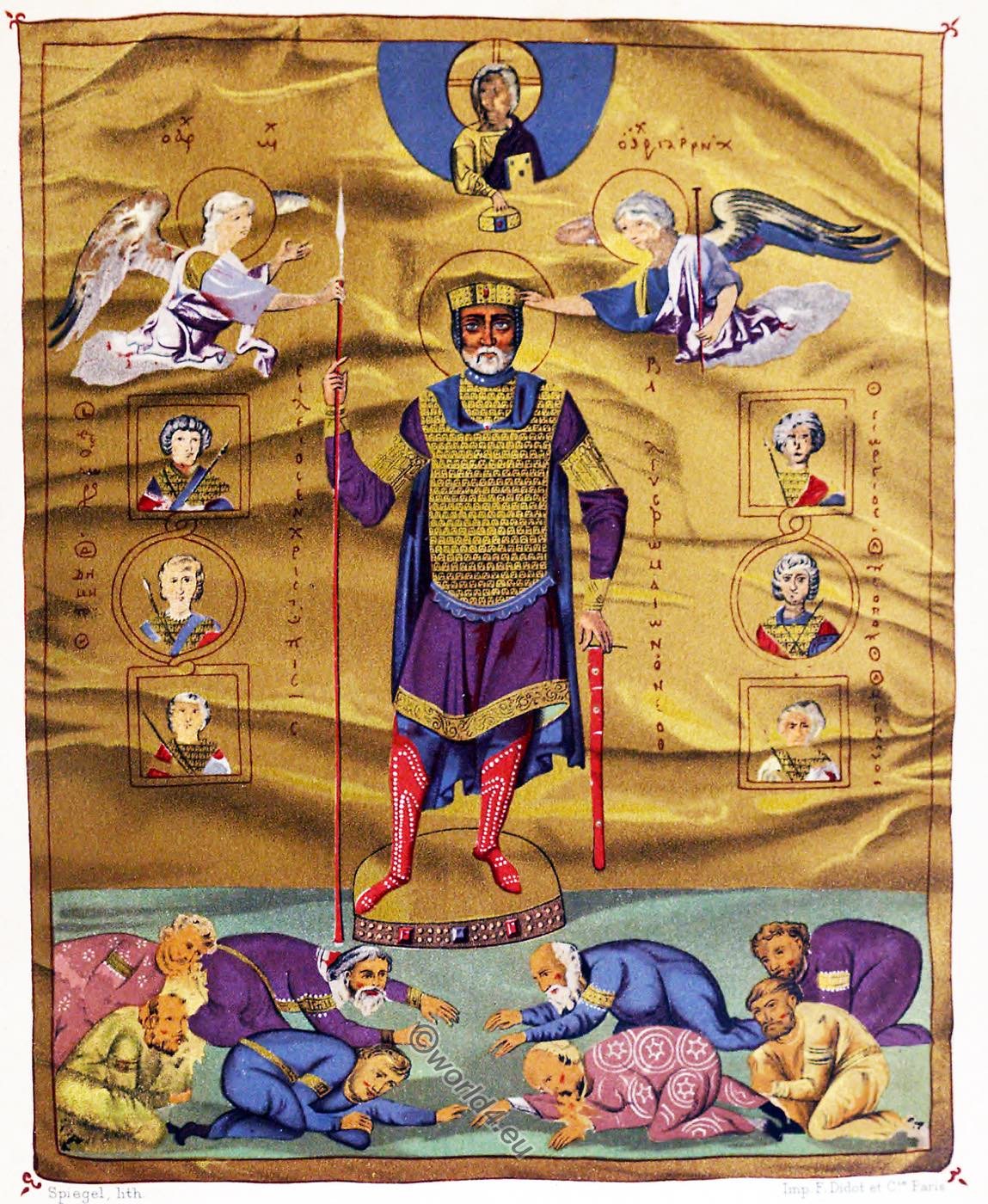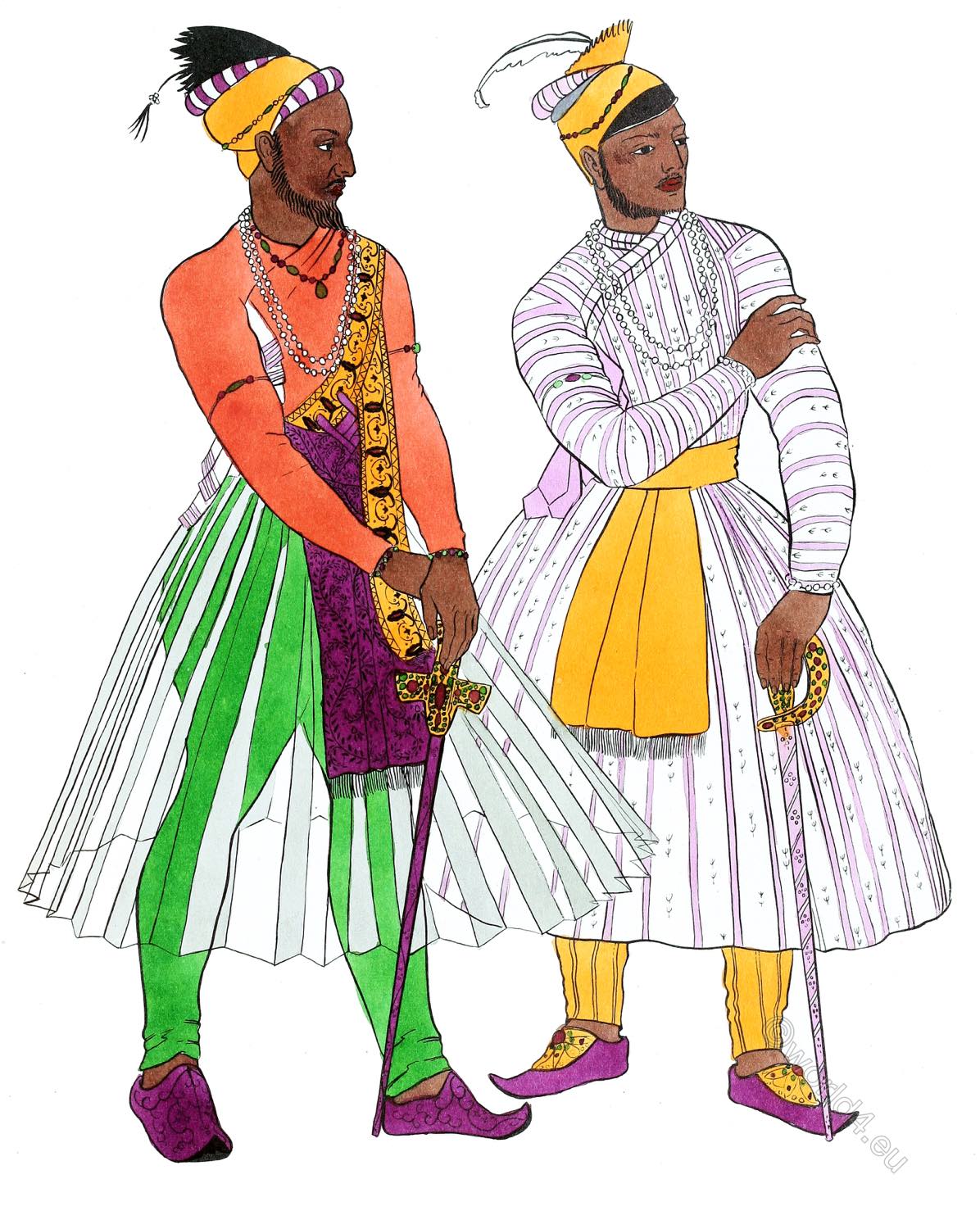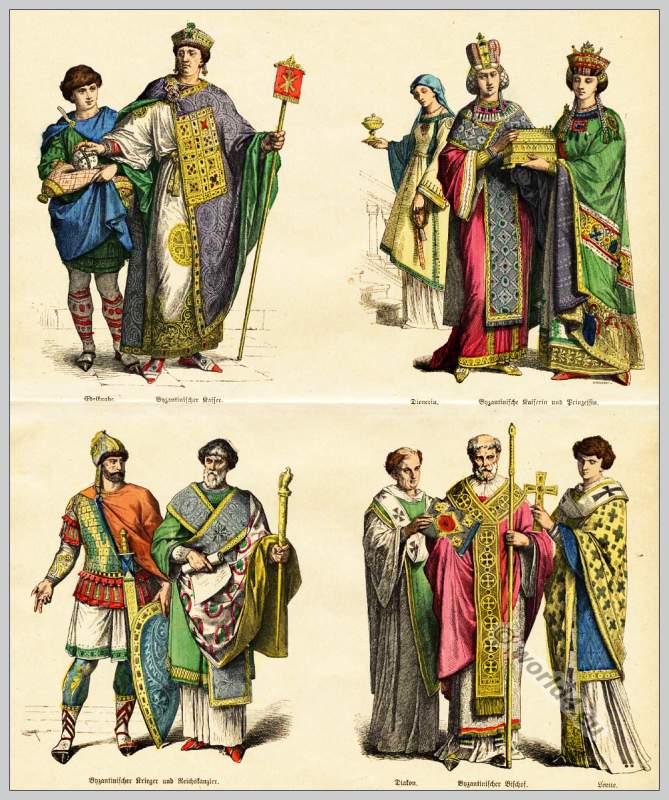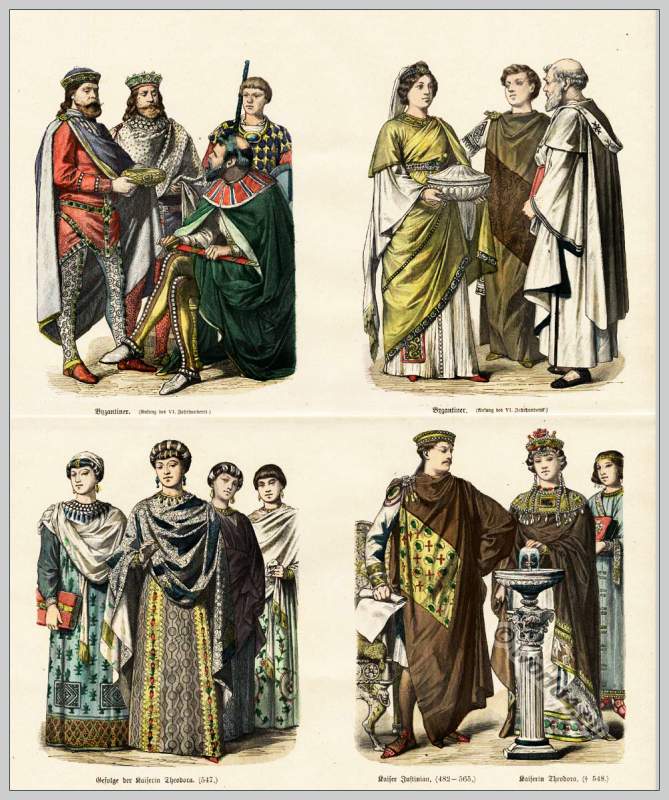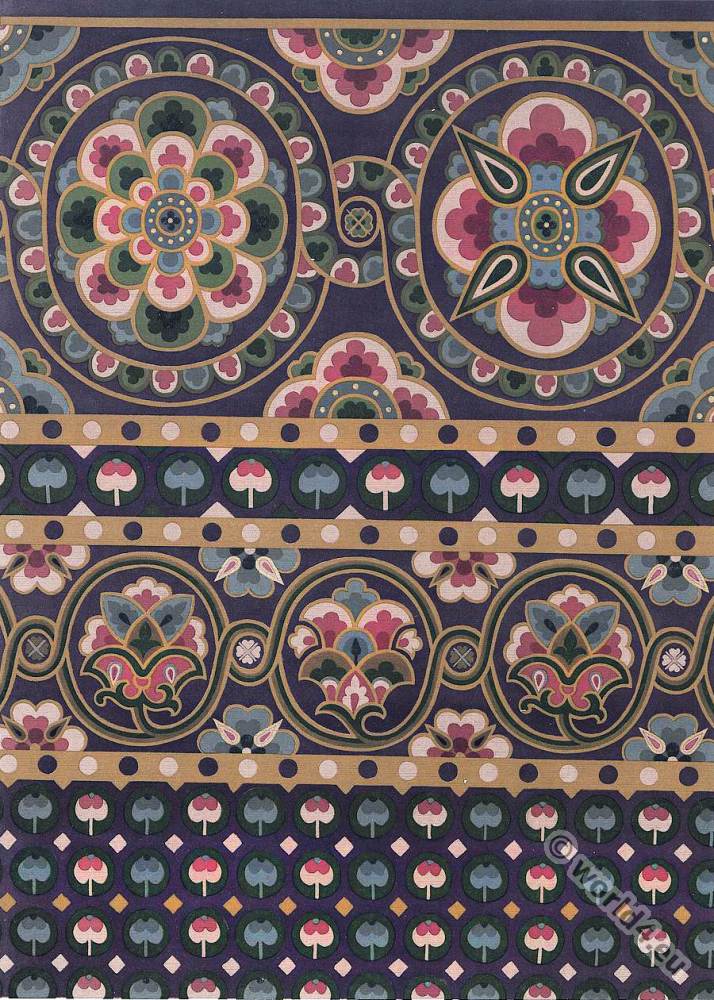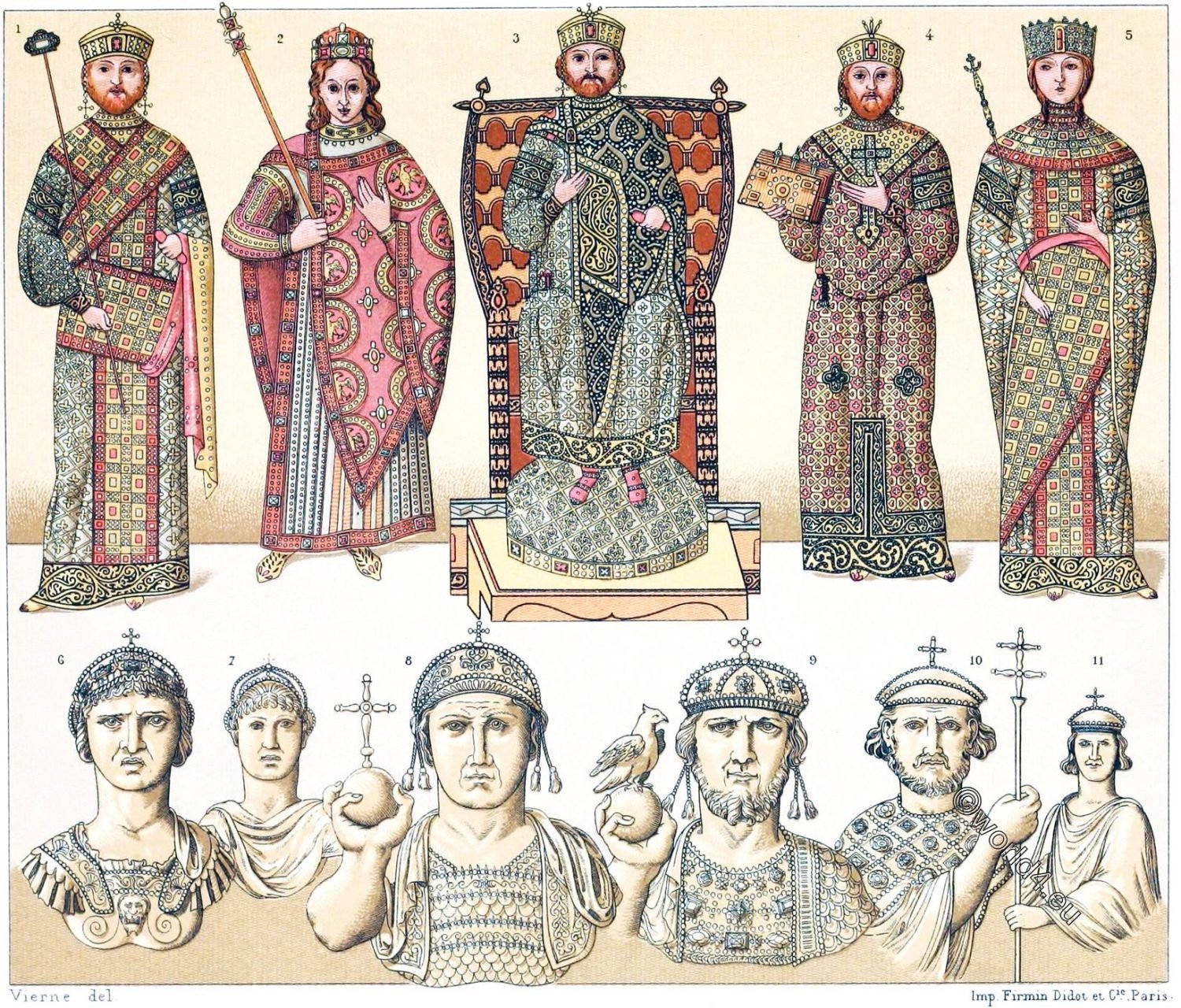
FRANKISH-BYZANTINE.
EMPERORS AND EMPRESSES OF THE EASTERN EMPIRE: SPLENDID AND DOMESTIC COSTUME. PORTRAITS OF EMPERORS.
SPLENDID AND HOUSE COSTUMES.
No. 2 Emperor of the first centuries; splendid costume.
Nos. 1, 3 and 5 Nikephoros III Botaneiates, Emperor (1078-1081) and his wife Mary of Alania; splendid costumes.
No. 4. Nikephoros III.
IMPERIAL PORTRAITS. The Heraklian Dynasty.
- Nos. 6 and 7 Herakleios (Byzantine Emperor from 610-641) and the Empress Eudoxia (Aelia Flavia † 612).
- No. 8. Justinian II. Rhinotmetes, emperor from 685-695 and 705-711.
- No. 9. Philippikos Bardanes (Byzantine emperor from 711 to 713).
The dynasty of the Isaurians.
- No. 10. Leo IV of the Chasars (from 775-780 Byzantine emperor from the Syrian dynasty).
- No. 10. Konstantinos VI Porphyrogenetes (780-797).
The Caesar laurel, the first sign of the imperial dignity, had been transformed into a diamond-studded tiara from which strings of pearls later hung; Emperor Justinian added a cross at the crown of the crown. The shape of the tiara is shown in nos. 6 and 8, the crown in nos. 1, 2, 3, 4, 9, 10 and 11, and the empress also wore a tiara (no. 7) or crown (no. 5).
On the coins of the early times the emperors of the Eastern Empire wore the costume of the Roman consuls and a scepter with a globe and an eagle (No. 9) or with the cross (No. 10). The great national costume included the nartex or ferula, a rather long staff ending in one or more squares set with precious stones (nos. 1 and 2). The Scepter of the Empress Maria (No. 5) ends in a cross.
Over a double tunic the emperor wore a purple chlamys, which was held on the right shoulder by an agraffe (No. 2). Since the fourth century the most distinguished insignia of the emperor is the Clavus , a square piece of gold brocade sewn onto the chlamys (No. 3). The emperor Nikephoros wears the palla in place of the chlamys, of the same fabric and embroidered as richly as the stole wrapped around his shoulders and hips.
The costume of the empresses is equally precious and of similar cut. Empress Maria No. 5 wears the tunic and stole, and Emperor Nikephoros (No. 4) wears the superhumeral.
The imperial shoes were usually yellow or red, made of a kind of maroquin called Persian leather.
Nos. 1, 3, 4 and 5 are taken from the selected works of St. John Chrysostom, a manuscript from the former library of the Duke of Coislin, Bishop of Metz, in the possession of the National Library in Paris (ms. No. 79 fonds Coislin)
No. 2 comes from the Historia Byzantina by Du Cange; 1680.
Source: History of the costume in chronological development by Auguste Racinet. Published by Adolf Rosenberg. Berlin 1888.

